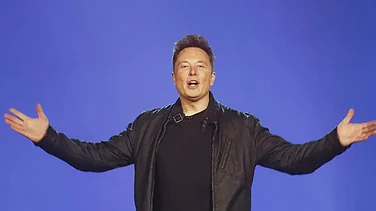Home-grown FMCG major Dabur India is seeing "very good recovery" in rural markets and expects growth from these markets to come at par with the urban market in the next 3-4 quarters, CEO Mohit Malhotra said.
As inflation is coming down with the cooling of commodity prices, a "slow volume recovery" is happening in those markets, which is narrowing the difference between the growth rate between rural and urban, he said.
The recovery from the rural market is likely to continue despite a disruption in rain in some parts of the country, led by factors such as hike in MSP, good sowing of winter crops, and election season.
Advertisement
Besides, India's unemployment rate has decreased in the rural areas and the consumer confidence index is also at an all-time high, almost reaching the pre-COVID level, he added.
"There are definite very good recovery signs, which actually I am seeing. The festive season which is coming in, should augur very well for us going forward in the future. So I am very hopeful," Malhotra told PTI.
The company which owns power brands such as - Dabur Chyawanprash, Dabur Honey, Dabur Honitus, Dabur PudinHara, Dabur Lal Tail, Dabur Amla, Dabur Red Paste, Real is enhancing its rural footprint with low unit price packs.
Advertisement
Asked when he expects rural growth to come at par with urban markets, Malhotra said: "It's a matter of time. I think it will take another three-four quarters... before rural comes at par with urban".
However, he added that the urban market is also driven by new-age channels such as modern trade and e-commerce, which are contributing around 20-25 per cent of the FMCG business.
"So they are growing much ahead. For the rural, which is mainly GT (general trade as Kirana), to grow at that percentage is very difficult because the rural market has a large base and for a large base to grow at that percentage is difficult. So urban, I think for some time it is going to drive the growth," he said.
Rural has a major population and almost 70 per cent of the total consumer base is from those regions, Malhotra added.
Pre-COVID, rural was growing ahead of urban, driving the growth in the FMCG sector, while urban was lagging behind, he added.
"Now, we are seeing gradual slow volume recovery happening in the rural market... if I look at the last quarter, we see rural growth of around 6.7 per cent urban growth overall 11.2 per cent.
"So, while the gap between urban and rural is narrowing, the gap is still there. Rural is still lagging urban but I think in due course of time as we lap over the lower bases rural recovery will continue to happen," he said.
Advertisement
Rural markets generally contribute around 35 per cent of the FMCG industry and had shown positive growth in consumption during the March quarter this year, after a gap of six straight quarters, according to a report from data analytics firm Nielsen IQ.
Dabur as per its strategy is looking at both urban and rural markets, which are expanding with the launch of more premium products, as average disposable income in India is increasing.
In the urban market, where expansion is driven by e-commerce, modern trade channels, and expansion of mini metro and class one town, it is focusing on premiumisation with large pack sizes, while in the rural, it is targeting the aspirational buyers with low units price packs, Malhotra added.
Advertisement
"We get the best of both worlds," he said adding "While in the rural areas, we go with the price points which are more accessible and the urban level we are premiumising."
Now, 85 per cent of the country's population is a consuming class, which includes the top and bottom of the pyramids. The aspirations between the urban and rural markets are becoming common with the growth of social media and smartphone availability.
Moreover, it is also trying to introduce some new brands in the premium category and also to relate with the millennials.















 Just one email a week
Just one email a week